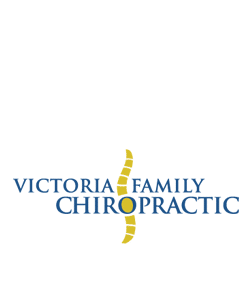Stretch to Health (Part 3)

A healthy spine and nervous system is the foundation to wellbeing and performance.
What does that actually mean? Well, a healthy spine is one that is aligned, flexible, and supported with muscle; this is the foundation for a healthy nervous system. Certainly other factors can influence nerve health, such as diet, mental state, and sleep, but without a healthy spine the nervous system cannot function as it should. The goal of this article is to show you ways to strengthen and stabilize the spine. I’ll cover techniques for safe spinal movement and a few exceptional exercises that help maintain alignment, prevent injury, and increase performance.
Before we talk about specific exercises it is very important to discuss how to move your spine safely. What I’m about to share holds true whether you’re picking up a sock or doing a 400-pound deadlift. In fact, many back injuries are the result of repetitively lifting and bending improperly; someone may feel their back go when they lift an object, but it is often the case that it was the proverbial straw that broke the camel’s back.
The key to lifting or bending safely is to keep your spine in a neutral position. Your spine has three curves when viewed from the side and when they are all curved as they are in the diagram, your spine will be at its strongest. These curves need to be maintained during any motion of bending or lifting no matter for what reason or how heavy a lifted object may be. You should also keep your spine straight when viewed from the front or back when lifting or bending, avoid twisting and, if possible, keep your neck straight, not rotated or bent. The key is to bend with your legs and not your spine. This does require flexibility in the ankles and hips (especially the hamstrings) and adequate leg strength to straighten from a bent position.
The most important curve to maintain when lifting is the lumbar lordosis, and it is easy to do: keep your lower back flat to prevent it from rounding. A rounded lower back puts strain on your joints, especially your discs. This strain is intensified if weight is added. Lumbar disc injuries are slow to heal and have a severe effect on mobility. Before you lift, get as close to the object as you can with it directly in front of you. Then brace your core (the tube of muscle from rib cage to buttocks), which feels the same as when you breathe all the way out. Finally, lift the object with your legs, keeping your spine in this neutral position throughout the movement. Tip: The neutral spine concept also applies to sitting.
With any exercise program there is a risk of injury from overdoing it or performing motions incorrectly. I cannot overemphasize the importance of maintaining proper form and starting slowly. In the past even I have overdone it and had poor form – and I’ve paid the price for it. I think many of us have a tendency to be impatient and want immediate results. This can be dangerous, so please remember to go slowly and safely. Remember: you won’t get any results if you can barely move because your muscles hurt too much or you have reduced mobility. If you are struggling with these exercises please contact me or consult an athletic therapist, personal trainer, or fitness expert for guidance. There is no exact rule with exercise as to how long to hold a position or how many repetitions (reps) and sets to perform. Listen to your body and try one set of 5-10 reps and see how your body responds over the next several days. Slowly you can increase reps, sets, and intensity to increase your strength and fitness. With strength training, I recommend training 1-3 times weekly to allow time for rest and regeneration. As your fitness improves, you can do more, but always allow for a day or two of rest per week, especially if you are exercising intensely.
Functional Core Strengthening Exercises:
- Squats: Squatting is an essential movement needed for bending down and lifting up but it’s also a fantastic way of strengthening the core. It may seem simple, but because of tight hamstrings, muscle weakness, or stuck spinal or ankle joints, people often do squats incorrectly. It can be done with weight on your back or chest or simply with your own body weight; don’t underestimate the effectiveness of a squat without any weight added. To perform squats correctly, keep your spine neutral (straight or ideally slightly concave lower back), brace your core, and bend down as if sitting in a chair. Your weight should be on the middle or slightly toward the balls of your feet, not on your heels. Your stance should typically be shoulder-width or wider and the upper body should be leaned forward to counter balance. Your knees should track in an imaginary line parallel to your feet as you bend. If you are new to this movement, start with simply the weight of your body until you are comfortable and confident with the movement. The goal is to get your femur bone at a 90-degree angle to your tibia or parallel to the ground as you bend down, then drive back up to a standing position. You can add weight as you get stronger. Aim for 5-10 repetitions for 1-3 sets one to three times a week.
- The Bird Dog: Pardon the funny names on the next two exercises; they make
 sense but do sound a little silly, despite being industry standard. This exercise is wonderful at strengthening the core and re-engaging muscle firing sequences. To do it, get onto your hands and knees on the floor or a bed if you’re unable to get on the floor. This exercise and the one below does challenge balance and coordination, so if balance is an issue, you might want to consider doing this next to a wall. It takes time to master the movement; it’s normal to feel awkward initially. From that hands and knees position, extend one arm and the opposite leg until they are parallel with the ground and then return to the starting position without arching or bowing your back. Your head should be in a neutral position during the whole movement. Keep the motion controlled and try to keep your pelvis from rotating. Engage your core during the motion and use your gluteal (buttock) muscles to push your leg back. Once you get to the extended position you can hold for a brief moment, but that isn’t necessary. Aim for 5-15 repetitions for 1-3 sets per side one to three times a week.
sense but do sound a little silly, despite being industry standard. This exercise is wonderful at strengthening the core and re-engaging muscle firing sequences. To do it, get onto your hands and knees on the floor or a bed if you’re unable to get on the floor. This exercise and the one below does challenge balance and coordination, so if balance is an issue, you might want to consider doing this next to a wall. It takes time to master the movement; it’s normal to feel awkward initially. From that hands and knees position, extend one arm and the opposite leg until they are parallel with the ground and then return to the starting position without arching or bowing your back. Your head should be in a neutral position during the whole movement. Keep the motion controlled and try to keep your pelvis from rotating. Engage your core during the motion and use your gluteal (buttock) muscles to push your leg back. Once you get to the extended position you can hold for a brief moment, but that isn’t necessary. Aim for 5-15 repetitions for 1-3 sets per side one to three times a week. - The Dead Bug: This exercise is the mirror of the Bird Dog above because the same movement is done while you are lying on your back. The movement for the Bird Dog focuses more on strengthening the muscles on the back-side (posterior) of your body while this one is more focused on the muscles on the front (anterior), such as the abdominals and hip flexors. To perform the Dead Bug, lie on your back with your arms straight and pointed up to the ceiling. Lift your legs, keeping your knees bent, so your thighs are 90° to your body and your lower legs are 90° to your thighs. This should put you in the same position you were in on hands and knees with the Bird Dog. From here, slowly lower one arm and the opposite leg to the floor, straightening your leg as it descends, and return to the starting position. Move only opposing limbs and don’t worry if you feel uncoordinated at first. Like the Bird Dog, the Dead Bug takes a little getting used to. Remember to engage your core and keep the pelvis and spine neutral (no rotation or bending). Sets and reps are same as above.
This concludes my three-part series on stretching for your health. I hope you have enjoyed it, learned from it, and (hopefully) tried some or all of these exercises for yourself!
OFFICE HOURS
Monday
7:30am - 1:00pm
Tuesday
1:00pm - 7:00pm
Wednesday
7:30am - 1:00pm
Thursday
1:00pm - 7:00pm
Friday
7:30am - 1:00pm
Saturday
Closed
Victoria Family Chiropractic
3200 Shelbourne Street Suite 203
Victoria, BC V8P 5G8
(250) 592-5553



